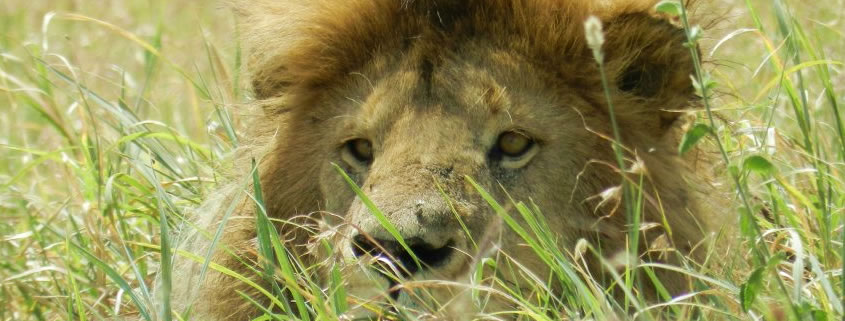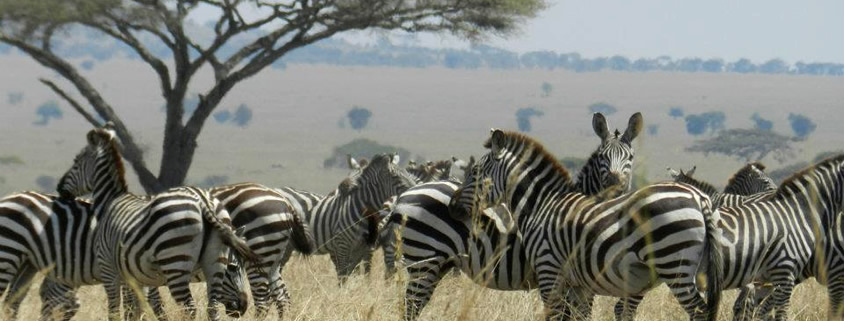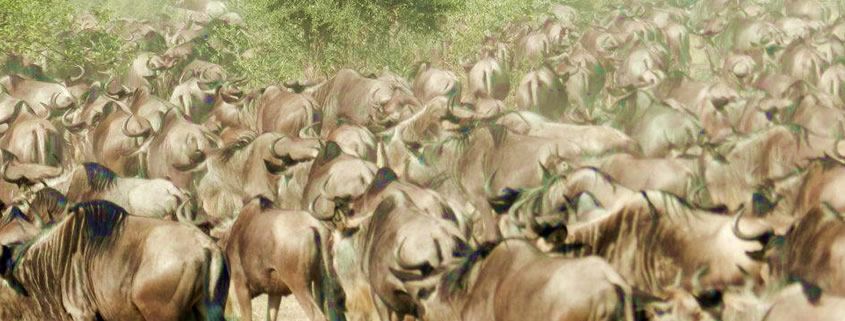Highlights
| Price: $$$ | Prominent features: The Great Wildebeest Migration, Serengeti Plains |
| Popularity: ♦♦♦ | Prominent wildlife: cheetah, leopard, wildebeest, lion |
| Activities: camping, hot-air ballooning |
Siringet – the plain that has no beginning and no end.
It is second to none in its size and scope of African wildlife. Serengeti Park is the home of safaris – of piercing red sunsets, lions on the prowl or lazing around in the heat, and endless lines of wildebeest in the great annual migration that calls them instinctively to cross over one thousand kilometers. In Serengeti National Park four of the Big Five animals – lion, buffalo, elephant, and leopard – are always close by.
The Great Migration of Africa takes place here in the Serengeti. Catch the stunning pilgrimage of wildebeest and zebra through the Serengeti from December to July. Millions of wildebeest will be moving in the largest animal migration on the planet from the southern plains of Ndutu to Maasai Mara in the north. Never diverting from their ancient path, they will cross the crocodile infested Gurumeti River between June and July.
From June to October get close up sightings of cheetahs in the southern savannas, leopards in acacia trees along Seronera River, and herds of buffalo. See these predators and and their prey play, feed, and fight during the dry season. Magnificent animals are always plentiful in Serengeti National park.
Explore
6 million species participate in the Serengeti great migration from Southern Serengeti to Masai Mara in the north. The rhythm of life is known to 1 million wildebeest, 250,000 zebras, and 400,000 Thompson gazelles among others.
Popular animals in Serengeti Park are cheetahs, leopards, and many packs of lions. Buffalo, elephant, giraffe, antelope, gazelles, impala, hartebeest, eland, jackals, serval cats, and hyenas inhabit the plains. Lizards, chameleons, and rock hyraxes hide out in the kopjes.
500 bird species, including the gigantic secretary bird and ostrich occupy the grasslands, hills, and rivers area.
The Serengeti plains span a 30,000 km2 area, crossing from northern Tanzania into the southwestern regions of Kenya known as the Masaai Mara. Bush fires and elephants have contributed to the grassland landscape with only a few areas of trees, generally closer to the Gurumeti and Seronera Rivers.
One of the oldest ecosystems on Earth, the Serengeti has remained largely the same over the past million years. The Serengeti Plains are composed of crystalline rocks covered by a layer of volcanic ash.
Granite outcrops, called kopjes, dot the landscape created by the debris of nearby volcanoes over a million years ago. The Simba and Masaai kopjes are micro-ecosystems and habitats of lions and other animals. In the north and west are mountain ranges formed during periods of volcanic activity. Two rivers flowing west fill and shrink with the rains. Animal life thrives near small lakes, marshes, and waterholes.
The equator crosses through Serengeti National Park, providing a warm and dry climate for most of the year. The best time to visit the Serengeti is from June through October when it is warm and dry. June through August is cooler.
January and February are the best kept secrets of the Serengeti. Visit during these months when travelers are few, and new life abounds after the short rain season of December.
Temperatures are moderate from 21-27 celsius.





